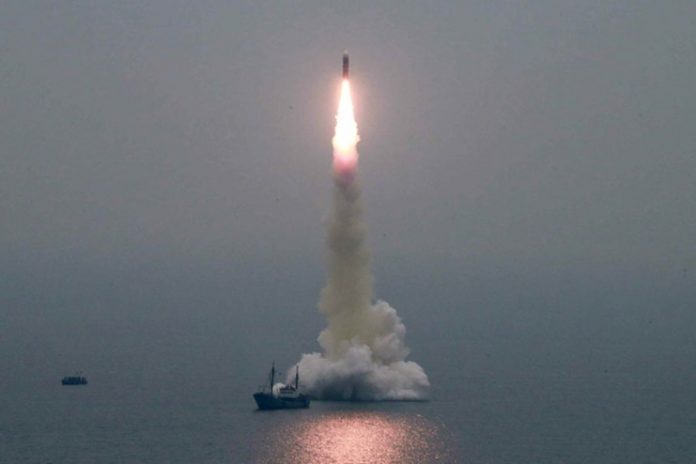
North Korean authorities have made the unprecedented decision not to discharge enlisted military personnel affiliated with the Korean People’s Army Strategic Rocket Force this year.
The Strategic Rocket Force operates the country’s arsenal of ICBMs and SLBMs.
As the measure reflects the government’s belief that it needs more personnel for the Strategic Rocket Force, which plays a central role in national defense, it suggests that North Korea plans to deploy a significant number of strategic weapons this year.
A source in Chagang Province told Daily NK on Thursday that the personnel department of the Strategic Rocket Force has decided not to issue regular discharge orders for enlisted soldiers in the spring and fall, a decision approved by superior commanders. He said this is the first time since its founding that the unit will skip a year of discharges.
North Korea’s military manpower bureau conducts regular discharges in spring (February to April) and autumn (August to October), timed with regular drafts in spring (April to May) and autumn (August to September).
However, the Strategic Rocket Force reportedly had no problem enlisting new personnel last August and this spring, meaning the unit is growing in personnel. North Korea has also conducted mass recruitments of graduates of two-year IT schools into the Strategic Rocket Force over the last two years.
The source said the decision not to discharge enlisted personnel this year at least partly aims to fill out the sharply growing number of new units in the force.
This demonstrates that North Korea plans to bolster the Strategic Rocket Force and the country’s asymmetrical firepower, including nuclear weapons, and reinforce them with a corresponding number of technical personnel.
During the Eighth Party Congress held in January of last year, North Korea presented the following major national defense tasks:
- Miniaturizing nuclear warheads for use in tactical nukes
- Developing hypersonic weapons
- Developing solid-fuel engines for submarine-launched and land-launched ICBMs
- Operating nuclear-powered submarines and military reconnaissance satellites
- Developing reconnaissance drones
North Korea subsequently has been focusing this year on various test launches.
The country has also created a railway-borne, short-range ballistic missile regiment and designated a “Strategic Rocket Force special district” to fortify parts of Chagang Province as a test launch site. The authorities are also accelerating the battlefield deployment of so-called strategic weapons as well as tactical weapons.
A military source in South Pyongan Province who is familiar with the Strategic Rocket Force’s draft and discharge activities said the force has expanded the number of draftees by 50% this year while discharging nobody, all in accordance with an order by the Supreme Command to increase the branch’s units and support staff.
The source said with the Strategic Rocket Force having a difficult time filling out its many new units despite the transfer of personnel from other branches and specialties, the force’s upper-level staff, political, and personnel departments decided to delay this year’s discharges until next year.
This runs counter to Kim Jong Un’s brand of “putting the people first” by shortening the country’s military service period (nine or ten years to seven to eight years for men, and six or seven years to five years for women) and placing discharged soldiers in economic development-focused activities instead.
The source said Strategic Rocket Force personnel who were supposed to be discharged this year will now serve one more year due to the new measure. At the urging of the force’s political department, personnel involved in the (missile) launch, maintenance, and technology fields are remaining as extended service officers at technological test sites and maintenance units.
Translated by David Black. Edited by Robert Lauler.
Please direct any comments or questions about this article to dailynkenglish@uni-media.net.

















